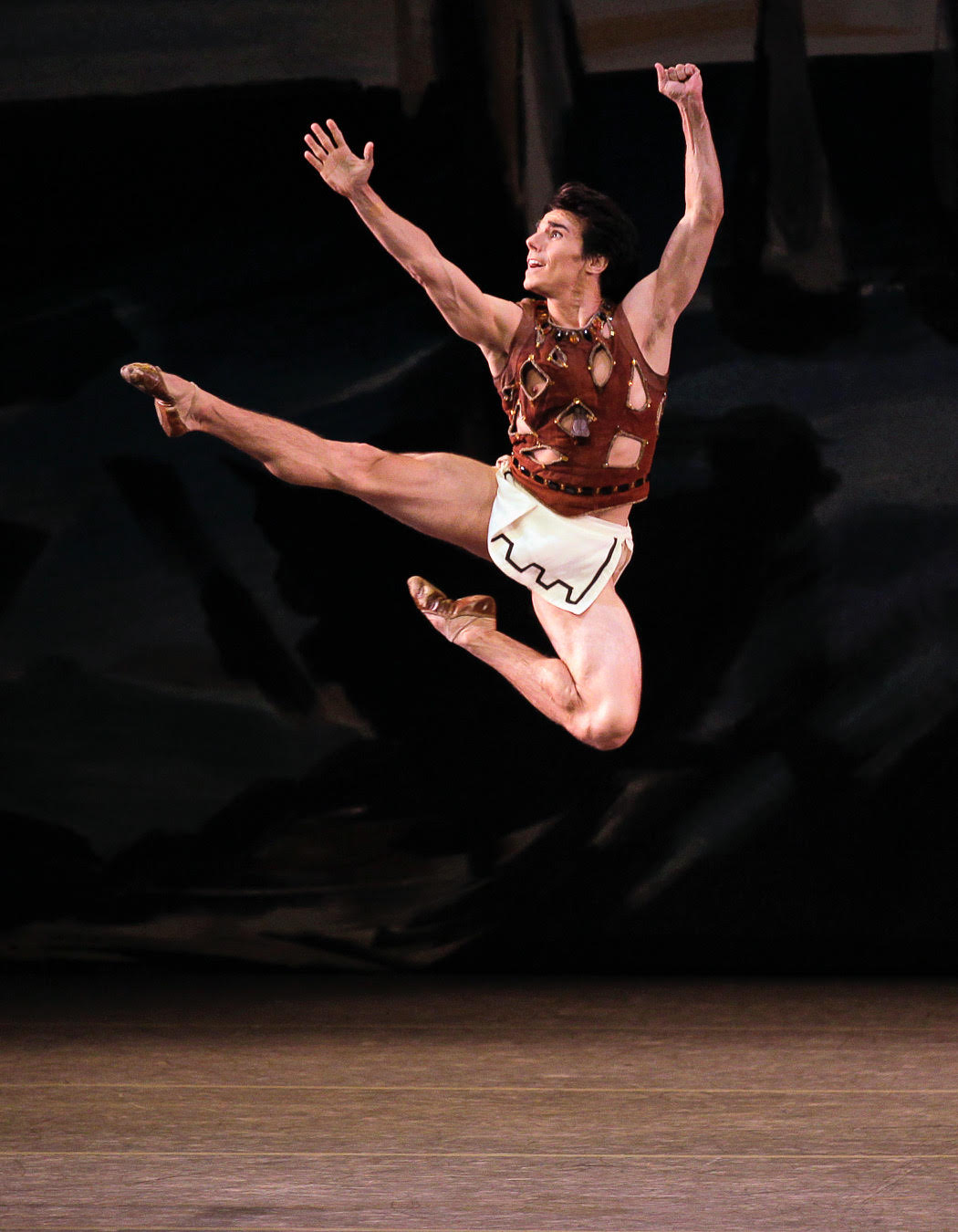|
Joaquin de Luz in the title role of "The Prodigal Son." (Photo by Paul Kolnik) George Balanchine made his name by purifying classical dance, transforming it into a form that solely expresses music.
But the founder and creative soul of New York City Ballet also could tell a story – and tell it well. And the final program of City Ballet’s stay at Saratoga Performing Arts Center has keyed into Balanchine’s talent for telling tales. On Friday night, the company offered up three of Balanchine-made narratives: the tragically romantic “La Sonnambula,” the biblical parable “Prodigal Son” and the lavish fairytale “Firebird.” All were vibrantly told with no-nonsense choreography that penetrated directly to the heart of the fables. All also included set and costumes that heightened the inherent drama and, in the case of the Chagall designed “Firebird,” could stand on its own. All of these works are so beautifully conceived and, for the most part, adeptly delivered, it’s nearly impossible to do more than nitpick at their renderings. “La Sonnambula,” the opener, was the weakest of the three, mainly because the Coquette, danced by Rebecca Krohn, and her dreamy Poet, danced by Chase Finley, didn’t appear to be fully invested in their roles. Their purported love was on the surface. Yet it needs to be vibrant for the audience because without that, the story is reduced to well-worn steps. The Sleepwalker, on the other hand, was danced with absorbing enchantment by Sterling Hyltin. With her hair down and staring straightforward, Hyltin becomes the otherworldly creature, the irresistible object of the Poet's betrayal. This is the core of the story, but without Krohn and Finley abandoning their reserve, “La Sonnambula” doesn’t crush the audience, as it should. “Prodigal Son” does. Joaquin de Luz was amazingly sharp as the reckless young man who longs to be free, but is wrecked by the wanton greed of the world. De Luz is demanding in his desire for frivolity and the Siren, danced by Maria Kowroski, calculatingly takes advantage of his weakness. Set to music by Prokofiev, the best parts of the work are the symbols inherent in the movement, including Kowroski’s arm and splayed fingers that rise above her head in triumph. It looks like a multi-headed snake swallowing its prey. The eye-popping “Firebird” finished off the night. Teresa Reichlen danced the magical bird that aids the Prince from the evil wizard. But what stands out in this ballet is the designs. The curtains by modernist Chagall are gorgeously lit by Ronald Bates and Mark Stanley. The costumes are also elaborate, imaginative and abundant. If one is not interested in the dancing, one could spend every second of the 30-minute ballet ogling the details in the costumes. No viewer could ever take it all in. The final tableau, with the Prince’s bride standing to display her red dress, is a stunner. That alone is worth seeing. As usual, the orchestra played the tremendous Stravinsky score with power and grace. The ballet is befitting the grandeur that New York City Ballet lends this small upstate city for two weeks every year. Bravo to every member, onstage and off.
0 Comments
Leave a Reply. |
Wendy
|

 RSS Feed
RSS Feed
